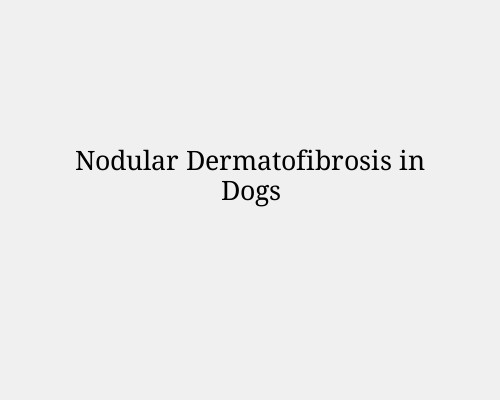Skin Tumors in Dogs What Owners Should Know
Skin Tumors in Dogs: What Owners Should Know
Introduction
Skin tumors are one of the most common health issues seen in dogs. While not all are cancerous, understanding the signs, types, and treatment options can help owners take prompt action. In this guide, we’ll break down everything you need to know about canine skin tumors.
![]()
What Are Skin Tumors?
A skin tumor is an abnormal growth of cells on or just beneath the skin’s surface. These tumors can be benign (non-cancerous) or malignant (cancerous).

Types of Skin Tumors in Dogs
Lipomas: Fatty, benign lumps under the skin.
Sebaceous Adenomas: Small, wart-like tumors that are typically benign.
Mast Cell Tumors (MCTs): One of the most common malignant tumors in dogs, often appearing as raised lumps.
Histiocytomas: Benign tumors that often occur in younger dogs.
Squamous Cell Carcinomas: A type of skin cancer caused by prolonged sun exposure or other environmental factors.

Causes and Risk Factors
Age: Older dogs are more prone to tumors.
Breed Predispositions: Some breeds (e.g., Boxers, Bulldogs, and Golden Retrievers) have a higher risk of developing skin tumors.
Sun Exposure: UV light can contribute to skin cancer in dogs with short or light-colored coats.
Environmental Toxins: Prolonged exposure to chemicals and toxins can increase cancer risk.

Recognizing the Signs
Lumps or bumps on the skin
Changes in the size, color, or texture of an existing lump
Ulceration or open wounds that don’t heal
Itching or irritation around the lump
Sudden growth or swelling

Diagnosing Skin Tumors
Veterinarians typically perform the following diagnostic tests:
Physical Examination: A thorough check of all lumps and bumps.
Fine-Needle Aspiration (FNA): Extracting cells from the lump for examination under a microscope.
Biopsy: A tissue sample is surgically removed and sent to a pathologist for analysis.
Imaging: X-rays or ultrasounds may be recommended to check for cancer spread.

Treatment Options
Surgical Removal: The most common treatment for tumors, especially if they are malignant.
Cryosurgery: Freezing the tumor, typically used for small, benign tumors.
Chemotherapy or Radiation: For malignant tumors that have spread or cannot be completely removed.
Medications: Anti-inflammatory drugs or steroids may be prescribed to reduce swelling or discomfort.

Prognosis and Long-Term Care
The prognosis depends on the tumor type, stage, and whether it has spread. Regular follow-ups and monitoring of any new lumps are essential. Early detection greatly improves treatment outcomes.

Preventive Measures
Routine Vet Exams: Annual check-ups can catch tumors early.
Sun Protection: Limit sun exposure for dogs with light coats.
Healthy Diet and Lifestyle: A well-balanced diet supports overall immune health.
Monitor for Changes: Owners should regularly check their dogs for any lumps, bumps, or unusual skin changes.
![]()
When to See the Vet
If you notice a new lump, a sudden change in an existing lump, or any signs of discomfort, contact your veterinarian as soon as possible. Early intervention is crucial.
![]()
Conclusion
While discovering a skin tumor on your dog can be alarming, not all tumors are cancerous. By staying informed and seeking veterinary care at the first sign of an issue, you can help ensure your dog gets the best possible outcome. Regular check-ups and monitoring can make all the difference.
![]()







